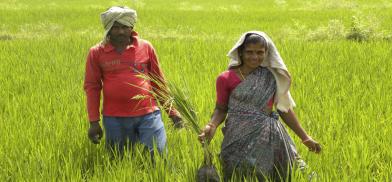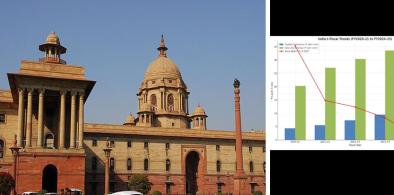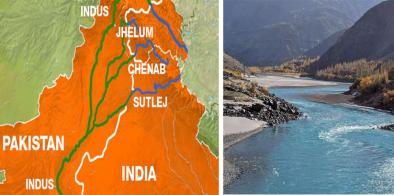Agri reforms in India: What should be the true price of farm produce?
The wealth of a country comes from its land. Around 55 percent of India’s population is connected with farming, writes Anil K Rajvanshi for South Asia Monitor

All of us irrespective of our financial situation need food to survive. We cannot eat nuts, bolts, or software but only food. Hence for our survival food is the most important thing.
And yet we hardly give a thought to farmers who provide us food. Hence we do not give adequate compensation for the farm produce with the result that farmers’ situation in India is really bad which ultimately results in their suicides and farmers' unrest. Recent events of farmers' agitation all over the country attests to this. Farming today is completely non remunerative and no farmer’s children would like to go into farming. This decline of the farming community will have a serious impact on farm productivity and may imperil India's food security.
To alleviate the crisis on the farm front, it is necessary that we should think about and debate the mechanisms by which farmers are adequately compensated for their labor.
For this to happen we need to calculate the correct price of farm produce. Presently the prices of food grains and other farm produce are decided by minimum support price (MSP) given by the Government of India. However, this is only valid when the government procures and lifts the grains and produce from mandis, or wholesale markets. With over-flowing and rat-infested government godowns, this mechanism of procuring grains at fixed prices is non-functional and collapsing under its own weight. Secondly, only a few food grains are procured by the government; hence fixing MSP for various commodities has no meaning.
The prices of farm produce are therefore mostly fixed by middlemen who buy and sell the commodities in the mandis. It is just like a share market where the actual price of commodities has no relationship with the cost of production and their utility. It is more of gambling.
Even with the new farm bill which was hastily passed by the Parliament, there is going to be more gambling because all the controls that Agricultural Produce Marketing Committee (APMC) had will also be gone. So the farmers will be at the mercy of players with no oversight either by the government or APMC. Thus MSP will have no meaning in this new dispensation. APMC is a marketing board that ensures farmers are safeguarded from exploitation by large retailers, as well as ensuring the farm to retail price spread does not reach excessively high levels.
I would like to propose a novel pricing structure which is based on the importance of food in our lives and based on the amount of energy spent in producing them.
Basis of calculations
When we go into an average restaurant we do not think for a minute or bat an eyelid when our bill comes to Rs. 400-500 per head. We normally eat 300-500 gram of food and this translates to our paying on an average Rs. 1,000 for one kilogram of food consumed! And yet an average farmer gets only Rs. 15-20/kg for his produce.
Since our survival and well-being depends on the food we eat, we should seriously think of giving at least 7-10 percent of restaurant bill back to farmers as the cost of their produce. This should bring cheers to the farmer’s life. Thus, all farm produce (grains and oilseeds) should be priced between Rs. 70-100 per kg. This costing is not far-fetched and is borne by other calculations as well.
Around 85 percent of the farmers in India own less than 2 hectares of land and the average landholding is about 1.18 hectares from which he/she produces mostly cereals and oilseeds. Thus about 80-85 percent of cropped land area in India is used for growing food grains and oilseeds whereas only six-seven percent is used for fruits and vegetables. The prices of grains and oilseeds fluctuate anywhere between Rs. 16-35 per kg and are wholly inadequate to make farming remunerative. From his 1.18 hectares, a farmer earns anywhere between Rs. 70,000 to 80,000 per year. For raising a family of four or five this is wholly inadequate.
Another peculiar aspect of farming is that the farmer gets remuneration for only 25-40 percent of his produce (grains, seeds, fruits, etc.). The rest 60-75 percent (the bulk of his produce) are residues which are mostly burned in the fields and create pollution all around. The farmer needs to be compensated for it since all the farm inputs are used up in the residue production also. The residues can be used for producing energy (via combustion and digestion) or excellent fertilizer via composting it. With proper pricing, a farmer can earn about Rs. 15,000 per hectares per year from residues alone. This can increase his income to almost Rs. 90,000 per year which is still inadequate and in poverty regime.
Factory wages to farmers
The average wage of a factory worker in India is Rs. 400-500 per day. He or she spends seven-eight hours doing physical work. These factory workers mostly produce white goods such as cars, two-wheelers, smartphones, refrigerators, etc. We define our quality of life by owning a variety of such goods.
Farmers who produce food, which is far more important than white goods, should be at least paid factory wages. In fact, farmers do much harder work while standing in the sun and work for longer hours than the factory workers and yet are paid much less.
Hence, with factory wages norm the farmer family (husband and wife) income can be Rs. 3.6 lakh a year. On average the yield of grains/oilseeds combination from a marginal farm is 2000 kg per hectares per season. So for two seasons and from 1.18 hectares, a farmer can produce 4720 kg of food grains/oilseeds per year. If the factory wages are given to him then it will translate into Rs. 76 per kg for his produce.
Energy cost of farming
We can also calculate the production cost by considering the energy cost of farming as compared to that of white goods. On average, the energy of producing white goods is 55 Megajoule (MJ) per kg. Calculations show that we pay on an average Rs. 10-20 per MJ for white and industrial goods. I feel we should give the same payment for the most essential item - food. The specific energy for food grains and oilseeds production is around 6-8 MJ per kg and with the white goods energy cost of Rs. 10-20 per MJ applied for the food we again arrive at the price of around Rs. 100 per kg for food grains and oilseeds!
Thus, MSP for food grains and oilseeds should be around Rs. 100 per kg and should be raised periodically based on inflation.
How should the farmers be compensated?
Most of the farm produce is sold through auctions in mandis all over the country. The traders then ship it all over the country depending on the demand. Fruits and vegetables are also sold through these mandis, but as they are perishable items hence are generally consumed in nearby areas. Besides, their quantities are much smaller as compared to that of food grains.
The Indian government can play an important role of a being a regulatory authority in these mandis, or during the produce procurement by the private players according to the new farm bill, so that the middlemen are forced to buy the produce from farmers at MSP at an enhanced rate of Rs. 100 per kg. It is not an easy exercise but a regulatory structure may force the traders and buyers to comply. The cost of production of farm produce is dependent on local factors and hence MSP should be fixed locally at the state level. A general countrywide MSP is not particularly useful.
The government gives a subsidy of about Rs. 7.6 lakh crores to the weaker sections of society. This subsidy includes that given for PDS, LPG, electricity, fertilizer, kerosene, MNREGA, etc. and also includes periodic farm loans write off. Very little of this subsidy (25-30 percent) goes to the poor people and most of it is siphoned by corrupt officials and system.
The entire subsidy should be given to the farmers directly through bank transfers. Farmers are the engine of growth. With their increased income they can also provide employment to the poorest of poor landless laborers in rural areas. This direct payment will also induce those farmers who presently are not farming to start farming again. Cost calculations show that payment from subsidy together with their present produce will give the marginal farmers an income of about Rs. 1.5 lakh per year. This is almost half of what they will get if they are given factory wages but still, it is a start.
There are also estimates that the Indian government gives sops, tax write-offs, etc. to the corporate sector to the tune of Rs. 5.32 lakh crores per year. The corporate sector has not been shown to be a paragon of virtue and their growth is quite slow. Besides this 'subsidy' only benefits a few. If this subsidy is diverted to the marginal farmers then their total subsidy can become nearly Rs. 13 lakh crores per year. (7.6 + 5.32).
According to the latest government figures, there are close to 100 million individuals with farm holdings of less than 2 hectares. If all of these farmers are given the total subsidy of Rs. 13 lakh crores per year then the average income of a marginal farmer from subsidy and produce will be about Rs. 2 lakh per year. This is similar to what an average sugarcane farmer gets presently from his farm. Such income will bring in cheer to the marginal farmer.
The wealth of a country comes from its land. Around 55 percent of India’s population is connected with farming. If the farm income can be increased by the above mechanism then it can benefit a huge chunk of the population and can have a multiplier effect on the Indian economy.
Too often politicians in the recent past have said that farmers should do something else besides farming to alleviate their suffering. This is a cop-out and a lazy person’s statement. In fact, we should double our efforts in making farming modern through precision and container agriculture so that the productivity and income from the farm increase.
Also, it is worth pondering on the fact that for the majority of farmers, farming is a way of life. For a country like India, we should make sure that this should continue rather than corporatizing farming where a large number of people may lose their livelihoods.
There are many examples where the farmers, even if they are given alternative employment, prefer to farm, and if they get adequate income from it they will be happy to do so year after year. After all producing something from the land is a very creative and enjoyable act.
(The writer is Director, Nimbkar Agricultural Research Institute (NARI), Phaltan, Maharashtra. The views expressed are personal. He can be contacted at anilrajvanshi@gmail.com. https://www.nariphaltan.org/writings.htm)




















Post a Comment